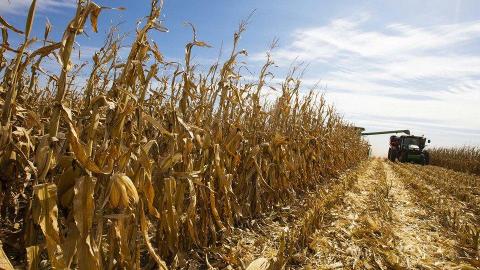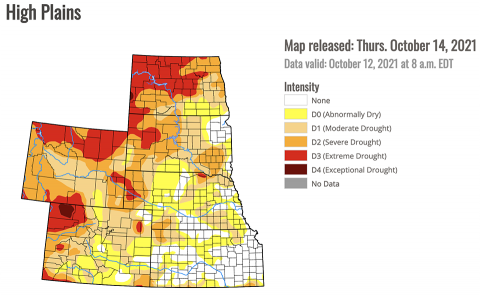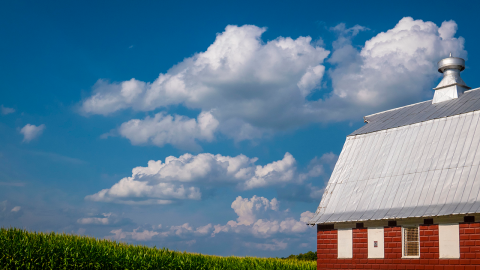Crop Progress: Corn, Soybean, Sorghum Harvest Pushes Ahead of Average Pace
October 14, 2021
For the week ending Oct. 10, 2021: corn harvest was 29%, ahead of 22% average; soybean harvest was 60%, ahead of 42% average; and sorghum harvest was 38%, ahead of 24% average.
USDA Designates Four Nebraska Counties as Primary Natural Disaster Areas
October 14, 2021
Chase, Dundy, Hayes and Hitchcock counties were designated as primary natural disaster areas due to prolonged or extreme drought intensity throughout the growing season. Several other counties were also named as contiguous counties eligible for aid.
#NField Observations for October 2021
October 14, 2021
This week, Ben Beckman discusses various fall grazing management strategies using cool-season and warm-season plants.
USDA Reports on Rising Land Values and County-Level Cash Rent Estimates for Nebraska in 2021
October 14, 2021
Recent findings from the USDA-National Agricultural Statistics Service reported Nebraska’s farm real estate value, which incorporates the average value of all agricultural land and buildings in 2021, increased by 11% to an average of $3,100 per acre.
Returning to the Farm Workshop Set for Dec. 10, 11
October 14, 2021
The workshop will assist families and operations in developing financial plans and successful working arrangements to meet their unique needs by identifying estate planning issues and developing transition plans, setting goals and improving the communication process.
Benchmarking — What Can We Learn from Others?
October 14, 2021
Organizing our farm and ranch production and financial data and then utilizing this information to look back historically and to benchmark with others, provides a way to measure our operation’s financial health and assist in important management decisions.
Pasture and Forage Minute: Managing Prussic Acid, Yucca and Fall Irrigation
October 12, 2021
In this week's article, educators review concerns on prussic acid development in sorghum plants, herbicide control for soapweeds in grazing lands and irrigating alfalfa this fall to help with stand stress.
Pasture and Forage Minute: Fall Grazing and Pasture Management
October 5, 2021
Extension Educator Todd Whitney explains why it's best to graze grain sorghum stover before corn residue, plus a rundown on improving hay and crop residue through ammoniation and proper care of fall pastures for best plant health through the winter.









